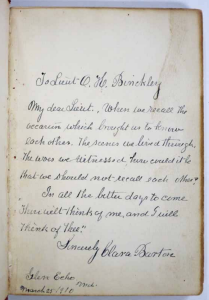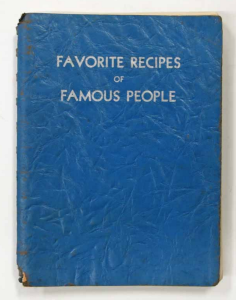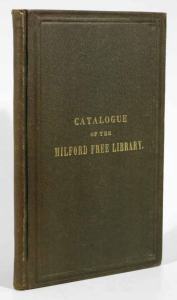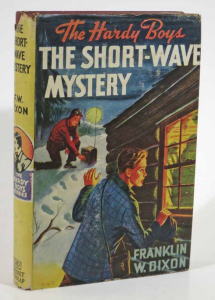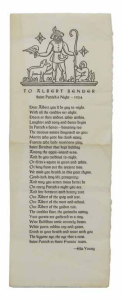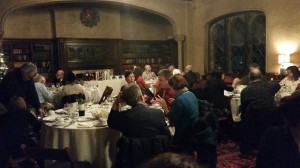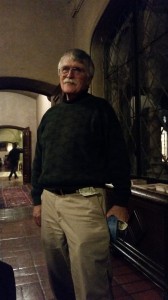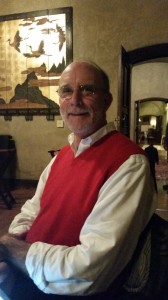
*
It’s been said that old dawgs can’t learn new tricks. Well, this old dawg thought maybe he could, for despite having been in the antiquarian book trade for 3+ decades, in the hopes of learning something new, the week of August 7th, I attended the CALRBS course, PostModern Bookselling, taught by my friends & ABAA colleagues, Brad & Jen Johnson, principals in the firm, Johnson Rare Books & Archives, Covina, CA.
For those not familiar with CALRBS, the courses are taught on the lovely UCLA campus, with the classes [mainly] held in the SE&IS building on the north end, right next to the Young library. While the UCLA Guest House is close by, I chose to stay at the Tiverton, at the South end of campus, close to Westwood. It made for a nice to/from walk every day… you know, “Get your steps in”.
As with most classes of this nature, the week began with a welcome brunch hosted by Director Robert Montoya, providing all attendees there for the week [CALRBS hosted 3 other classes that week] the opportunity to meet staff & fellow attendees, followed by each class heading to their respective class room. So the 8 of us gathered in room 101, and began the week together with personal introductions… we were a rather diverse group, though as you might imagine, the majority were booksellers in some fashion or form, ranging from relative newbies, to this old dawg of 34 years standing.
Brad & Jen’s plan for the course was to demonstrate to the class that the trade has evolved from what it was just a few decades ago… that PostModern booksellers should recognize that material other than just books is worth their time & energy, and they used their personal success as an example of what is possible. For those that don’t know, Johnson Rare Books & Archives has enjoyed considerable prosperity by focusing on archives, telling the story of under-represented communities & those outside the mainstream of literary pedagogy. Further, they emphasized the practice of active bookselling [reach out to possible customers] vs that of a passive nature [e.g., list your books on ABE, and wait for a buyer].
But what about specifics of the week you ask? To the Johnson’s credit, they brought in [some by Zoom] experts from many walks of the trade & book world… To start, Monday afternoon, Kevin Johnson, principal of Royal Books & author of The CELLULOID PAPER TRAIL, led a session on movie scripts, their history, identification, etc. Fascinating! We spent Tuesday morning with Russell Johnson, UCLA Curator of the History of Medicine. For those that know Russell, you know he’s a very generous individual, and a true friend of the trade. He showed us a number of usable treasures he’s procured over the decades he’s been in his position. And Tuesday afternoon was devoted to “Born Digital”, a Zoom presentation by Will Hansen, Newberry Library, followed by buying at auctions, another Zoom session, with Joe Fay, McBride Rare Books [and one who spent a number of years with Heritage auctions, so he had intimate inside knowledge of that about which he spoke].
Wednesday was spent on a field trip to Covina, where Brad & Jen had closed their shop for the day, in order to give the class the run of it, as well as show us some projects currently in the works… perhaps most impressive was a recently acquired consignment, a binding collection of some repute [Morris-Levin anyone?], though some were taken by Brad’s archive-in-the-building, nudist camp literature [feel free to quote him material]. But perhaps the high point of the day was lunch at Brad & Jen’s go-to place, Casa Moreno. Good food, generous portions, great company! After lunch, we traipsed over to Pasadena to visit “Paper Village”, a site where a number of pickers store their finds. What a fun afternoon! I even bought a bunch of books [which Brad kindly agreed to ship back to Reno for me].
*
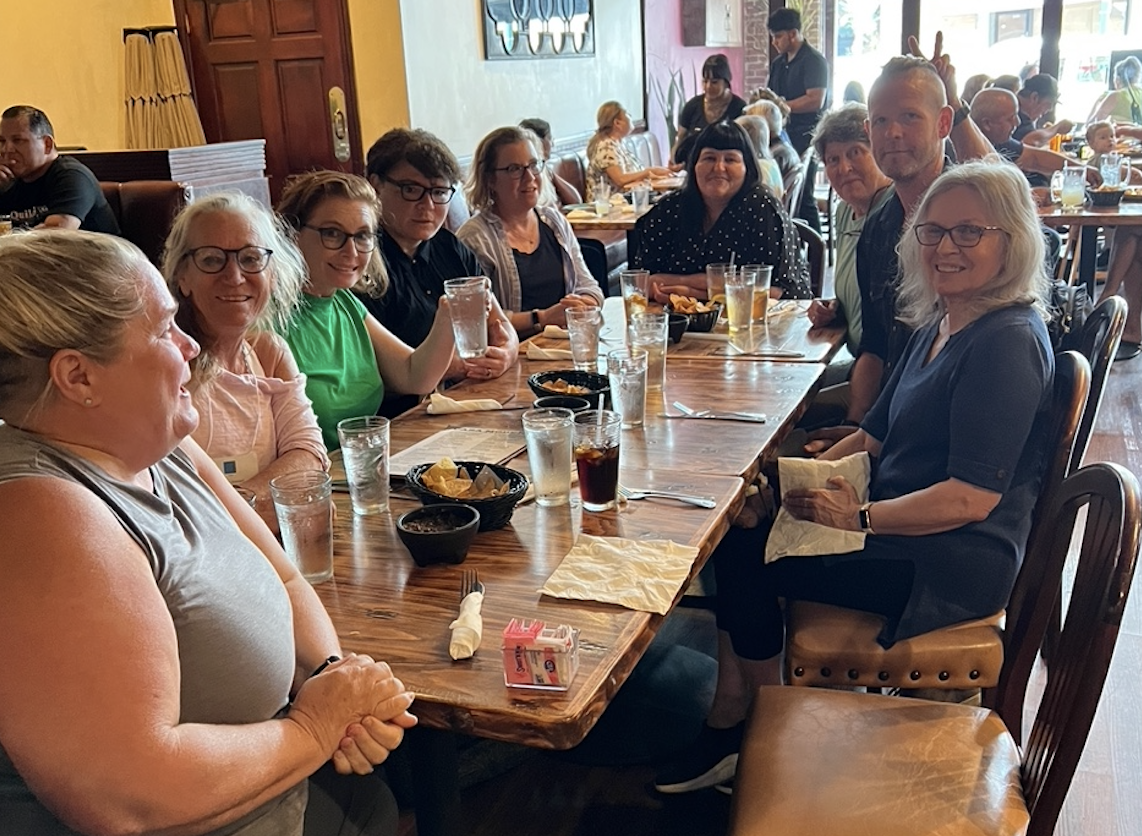
*
Thursday was another busy day, with 4 areas covered: “Working with Institutions”, led by Greg Williams, Special Collections Librarian for CSU Domingo Hills. “Introduction to Appraisals” by James Goldwasser, Locus Souls Rare Books. “Research Strategies for Non-Traditional Materials”, Kate Mitas, Bookseller [by Zoom]. “Non-Traditional Approaches to Photography”, Kent Tschanz, Tschanz Rare Books. While all were quite good, and James taught me a few things about appraisals I didn’t realize [or forgot], I confess, I have to give a nod to Kent as my favorite, for his enthusiasm for the subject was nothing short of infectious. I’m only sorry he didn’t have another hour or two, for he showed some truly magnificent images to the class, though many were given short shrift, or skipped altogether, due to time constraints.
While not originally part of the class schedule, fortuitously, the LA Art Book Fair had its opening night that night. We all went. The crowds, of mostly young folks, was nothing short of amazing. And two of our class [Miranda & Laurelin, Amortia Fine Art Books] had a stand! We all hoped they killed it! After, dinner at a local restaurant, Manuela DTLA, fabulous of course!
*
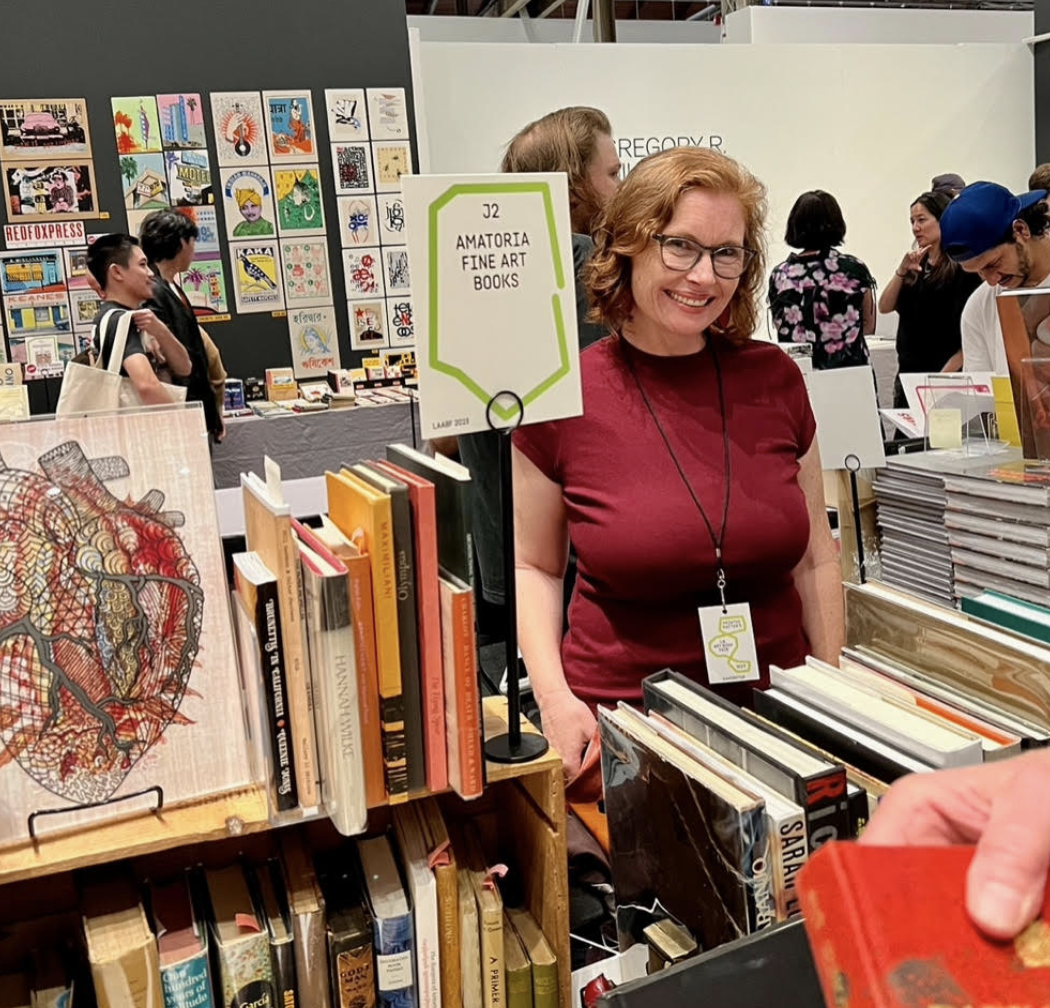
*
Friday, our last day, but certainly not our least. It began with a Zoom session featuring colleague Andrew Gaub, Bruce McKittrick Rare Books. McKittrick Rare Books focuses solely on books from the hand-press period, and Andrew spoke on how to market & sell antiquarian books in the 21st century. Suffice it to say, despite the week’s bias toward non-traditional materials, Andrew makes a credible living selling ‘olde’ books. The next session was with two local LA librarians, Dalena Hunter & Lizeth Ramirez, who discussed the collecting of under-represented communities. And while their focus is LA, the precepts they shared can be applied to any locale. Finally, class concluded with a “Non-Traditional Materials Workshop”, where each of us was to ‘pick & catalogue’ an item supplied by Brad & Jen. Mine was a photo album & letter archive Brad had just purchased just the Sunday prior at the Pasadena flea market! Since it may soon be on the market, I won’t say too much more, other than that guy sure has an eye for great material!
The official week ended with a mixer at the Young library, typical cheese cubes & white wine, but long on new friends saying their goodbyes. It was sad to see the week end, but hey, next year brings another schedule of classes, so perhaps I’ll see you in LA the summer of 2024?



